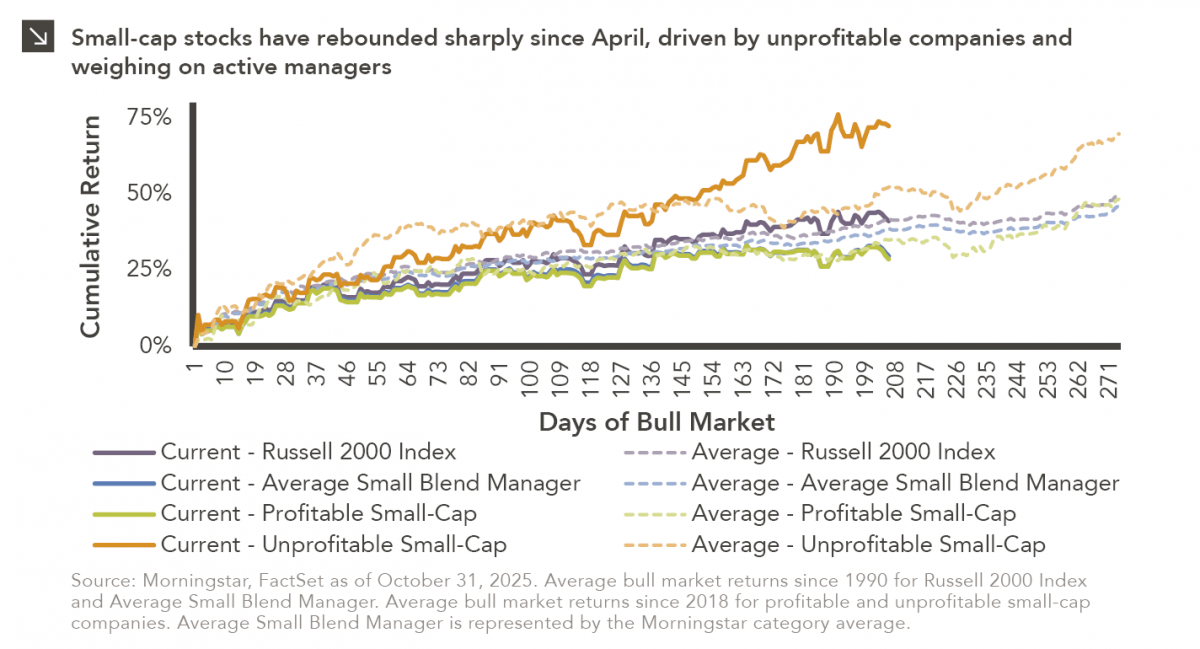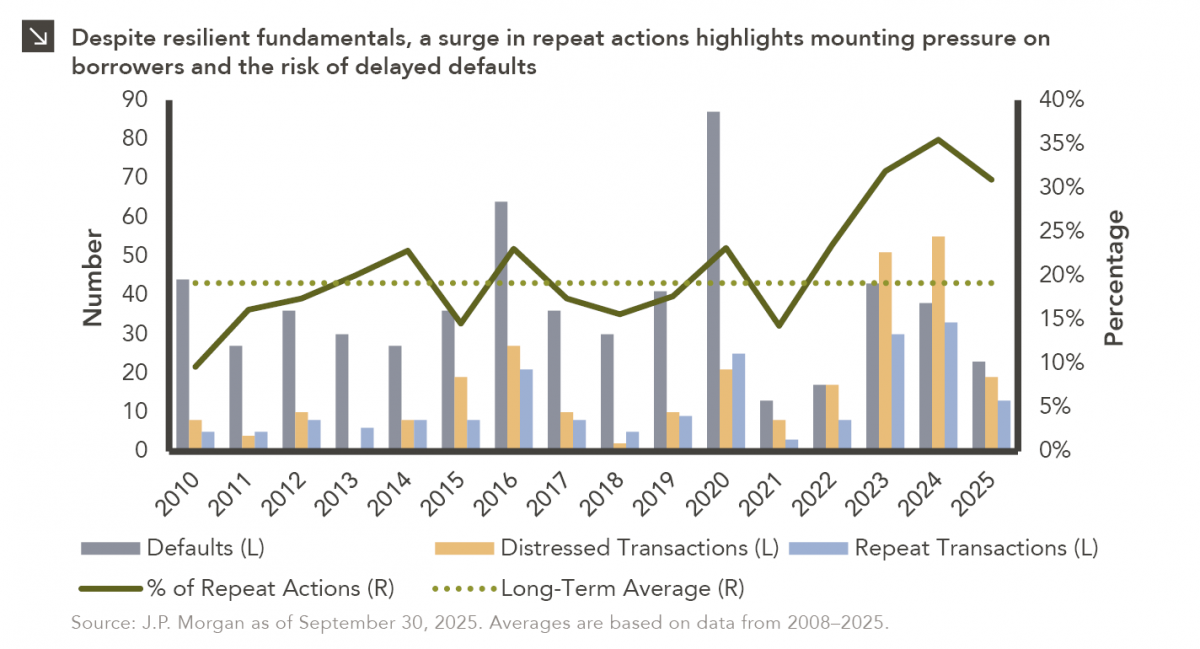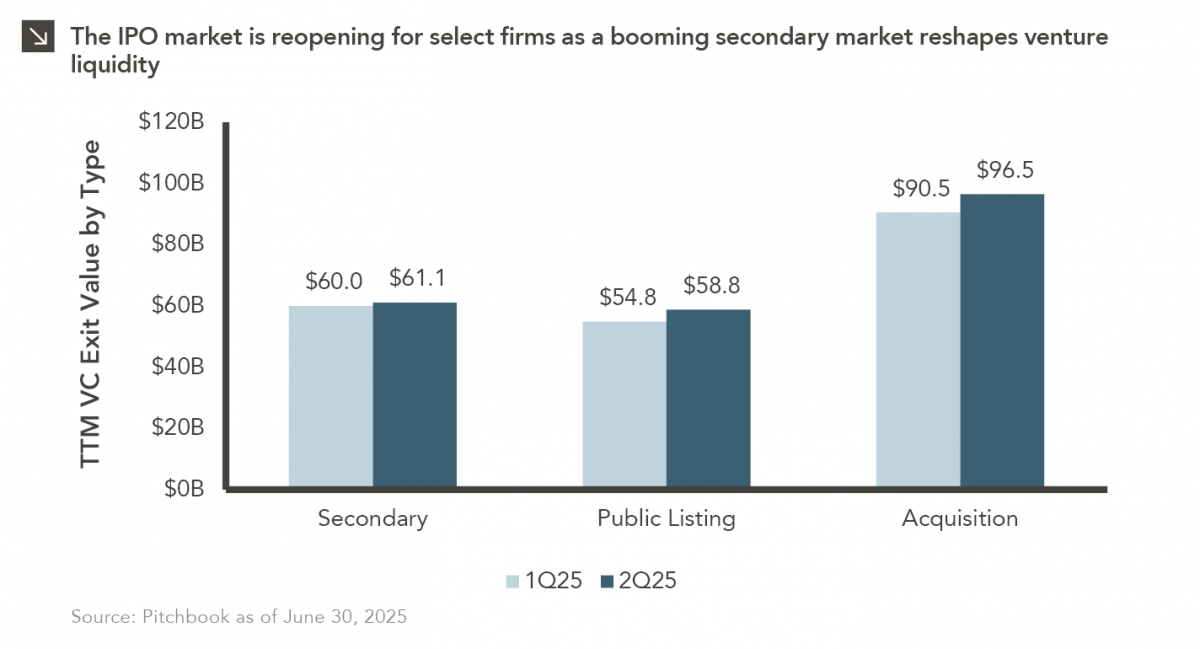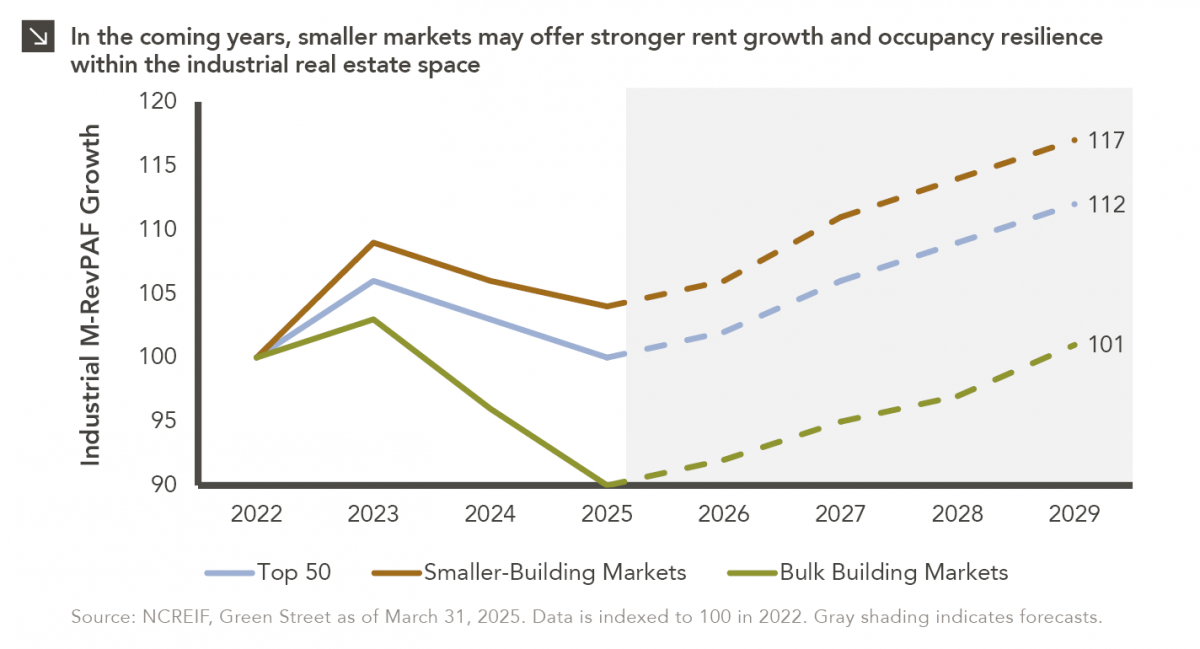11.03.2025
No Small Headwind for Small-Cap Managers
Small-cap equities are in a prolonged period of underperformance relative to large-cap stocks, but this trend has shown early signs…

Most investors understand that over the long-term, the investment grade credit sector tends to outperform the U.S. government sector due to its risk. Many may be surprised however, at the size of the outperformance. Since its 1973 inception to May 2012, the BarCap U.S. Credit Index has outperformed the BarCap Government Index by just 38bps. Today’s Chart of the Week shows the rolling three year outperformance of the BarCap Credit Index versus the BarCap Government Index. Up until 2007, credit enjoyed a long period of relatively steady outperformance, interrupted by the recession after the tech bubble burst.
To achieve this outperformance, investors in credit would have experienced a standard deviation of 7.79%, compared to 5.61% for governments. The maximum decline for credit versus governments was -19.26%, and -7.92% respectively. This decline in credit was actually experienced from September 1979 to March of 1980, not in 2008.
Thus, while the credit crunch of 2008 was an extreme event, the actual margin of underperformance in credit had been seen before in the 1980’s. It is also important to note that the raw outperformance numbers are likely overstated in favor of the credit index, which has a longer duration. As rates have been in a secular downward trend over the past 30-years, this has boosted longer duration returns. The duration of the BarCap Credit Index as of May 31 was 6.73, compared to 5.43 for the BarCap Government Index. From 1997 to 2012, the period for which duration numbers are available, the credit index has had an average duration 0.91 higher than the government index.
Of course, past returns do not necessarily predict future returns. The forward outlook for credit has tended to be more positive during periods of elevated spreads, as investors are paid a higher premium to take on credit risk. As of the end of May, the option adjusted spread of the BarCap Credit Index was 193bps, compared to its long-term average of 121bps.
The opinions expressed herein are those of Marquette Associates, Inc. (“Marquette”), and are subject to change without notice. This material is not financial advice or an offer to purchase or sell any product. Marquette reserves the right to modify its current investment strategies and techniques based on changing market dynamics or client needs.

11.03.2025
Small-cap equities are in a prolonged period of underperformance relative to large-cap stocks, but this trend has shown early signs…

10.27.2025
To paraphrase a quote from former President George W. Bush: “Fool me once, shame on… shame on you. Fool me…

10.22.2025
This video is a recording of a live webinar held October 22 by Marquette’s research team analyzing the third quarter…

10.20.2025
This week’s chart compares institutional and retail investor sentiment using two established indicators. Institutional sentiment is represented by the National…

10.13.2025
After a three-year drought, the IPO market is stirring again… but only for a select few. Just 18 companies have…

10.06.2025
This week’s chart compares realized and expected Market Revenue per Available Foot (“M-RevPAF”) growth within the industrial real estate space…
Research alerts keep you updated on our latest research publications. Simply enter your contact information, choose the research alerts you would like to receive and click Subscribe. Alerts will be sent as research is published.
We respect your privacy. We will never share or sell your information.
If you have questions or need further information, please contact us directly and we will respond to your inquiry within 24 hours.
Contact Us >